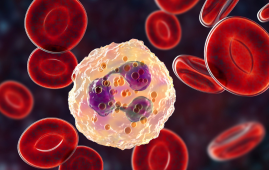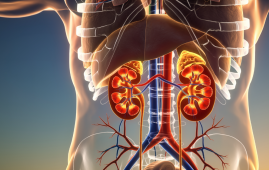

A Bacterial Pathogen That Refuses to Fail
In a recent study published in mBio, researchers have discovered that Staphylococcus aureus, a notorious pathogen responsible for skin infections and life-threatening systemic illness, demonstrates a remarkable level of metabolic redundancy. This survival trait may partially explain the bacterium’s success in resisting treatment, including in antibiotic-resistant strains like MRSA.
The team focused on a group of bacterial enzymes responsible for producing isoprenoids, molecules essential for respiration, cell wall synthesis, and pigmentation. These functions are critical to bacterial viability, yet when one of the enzymes (IspA) was disrupted, the bacterium continued to thrive. The redundancy in this metabolic pathway, particularly through an alternative enzyme known as HepT, offered new insight into the robust nature of bacterial survival strategies.
Explore all 2025 Medical Conferences & Courses (CME/CE) by Specialty
Knockout Mutants Reveal Hidden Survival Pathways
Using knockout mutants, the researchers found that disabling IspA alone was not lethal due to compensatory activity from HepT, highlighting a productive enzyme redundancy in Staph. Only when both genes were knocked out did the bacterial growth and pigmentation cease, confirming the survival dependency on at least one active pathway.
“So, how in the world is a mutation in ispA viable? How can the cell tolerate that? That’s really what started this project off. It was really just a basic science investigation.”
–Troy Burtchett, MGI PhD graduate
This discovery of metabolic redundancy in Staphylococcus aureus sheds light on why treatment strategies often fail, especially in persistent infections. It also helps explain how MRSA adapts rapidly under stress, making conventional antibiotics less effective over time.
As the study was supported by an NIH grant, it holds promise for advancing future clinical research, particularly around novel antibiotic development from pathway inhibition. Targeting both enzyme pathways simultaneously could present a new therapeutic angle against hard-to-treat staph infections.
A New Frontier in Targeting Resistant Pathogens
For healthcare professionals and researchers, this insight opens the door to reevaluating how we approach antibiotic resistance. By focusing on dual-pathway inhibition, drug developers may be able to bypass the adaptive mechanisms that have rendered many antibiotics ineffective against Staphylococcus species.
Clinicians working in infectious diseases, critical care, and microbiology should be aware of this new dimension in bacterial metabolism. Understanding these compensatory mechanisms can help guide more effective antimicrobial strategies and influence future CME/CE content for clinical practice updates.
For More information:
Burtchett, T. A., et al. (2025). A redundant isoprenoid biosynthetic pathway supports Staphylococcus aureus metabolic versatility. mBio. doi.org/10.1128/mbio.00353-25.
more recommended stories
 Phage Therapy Study Reveals RNA-Based Infection Control
Phage Therapy Study Reveals RNA-Based Infection ControlKey Takeaways (Quick Summary) Researchers uncovered.
 Pelvic Floor Disorders: Treatable Yet Often Ignored
Pelvic Floor Disorders: Treatable Yet Often IgnoredKey Takeaways (Quick Summary) Pelvic floor.
 Urine-Based microRNA Aging Clock Predicts Biological Age
Urine-Based microRNA Aging Clock Predicts Biological AgeKey Takeaways (Quick Summary) Researchers developed.
 Circadian Control of Neutrophils in Myocardial Infarction
Circadian Control of Neutrophils in Myocardial InfarctionKey Takeaways for HCPs Neutrophil activity.
 E-Cigarette Use and Heart Attack Risk in Former Smokers
E-Cigarette Use and Heart Attack Risk in Former SmokersKey Takeaways for Clinicians and Nurses.
 36-Week Pre-eclampsia Screening May Reduce Term Risk
36-Week Pre-eclampsia Screening May Reduce Term RiskA New Preventive Strategy for Term.
 Cardiovascular Risk and Sudden Cardiac Death in Diabetes
Cardiovascular Risk and Sudden Cardiac Death in DiabetesRising Sudden Cardiac Death (SCD) Risk.
 Poor Kidney Function and Alzheimer’s Biomarkers Explained
Poor Kidney Function and Alzheimer’s Biomarkers ExplainedPoor kidney function may influence levels.
 Walking Speed Before Hip Replacement Predicts Recovery
Walking Speed Before Hip Replacement Predicts RecoveryNew Evidence Points to a Simple,.
 Neuroblastoma Drug Combo Extends Survival in Models
Neuroblastoma Drug Combo Extends Survival in ModelsA Promising Shift in High-Risk Neuroblastoma.

Leave a Comment